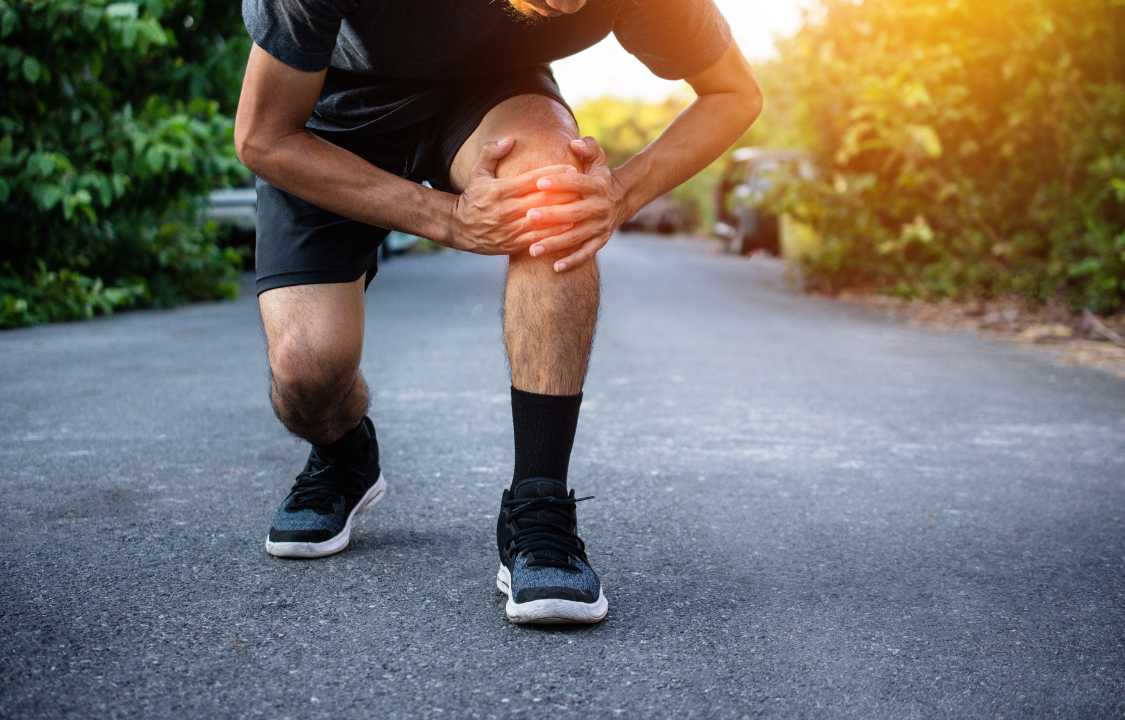Health Care, Treatment
6 Causes of Knee Pain From Running—and How To Prevent and Treat It
Some of the most common causes include runner’s knee, tendonitis, poor form, or the wrong shoes.
Running, the rhythmic symphony of feet hitting the pavement or treadmill, is a liberating and rewarding form of exercise. Whether you’re a newbie lacing up for your first 5k, a seasoned runner training for your next half-marathon, or simply seeking an escape from the rigors of daily life, running has the power to keep you fit, ignite your competitive spirit, and provide a temporary sanctuary of solace.
Yet, as exhilarating as running can be, it often comes with a familiar and unwelcome companion – knee pain. Running is a high-impact exercise that subjects your joints to repetitive, forceful stresses. Among these joints, the knee is particularly susceptible to pain and discomfort. This article aims to unravel the mystery behind knee pain in runners, exploring the causes, treatment options, and prevention strategies to ensure you can continue running pain-free and accumulate those miles for years to come.
Understanding the Culprits: Why Do Runners Experience Knee Pain?
Before delving into the solutions for knee pain, it’s essential to identify the culprits that trigger this discomfort. Running’s high-impact nature places a significant burden on the knees, making them vulnerable to various issues. Here are six common causes of knee pain in runners and how to address them effectively:
1. Runner’s Knee (Patellofemoral Pain Syndrome)
- Cause: Runner’s knee, technically known as “patellofemoral pain syndrome,” often results from repetitive motions, misalignment of the kneecap due to weak or tight leg muscles, and occasionally, poor running form.
- Symptoms: Pain typically manifests beneath the kneecap or at the front of the knee, especially during activities like running, particularly on hills or stairs.
- Treatment: Rest for at least two weeks, transition to softer surfaces like grass or sand, and apply ice after each run during recovery. Consult with a physical therapist to address muscle weaknesses, particularly in the hips.
- Prevention: Gradually increase mileage to minimize overuse injury risk. Incorporate cross-training, stretching, and resistance training into your routine to maintain muscle balance.
2. IT Band Syndrome (Iliotibial Band Syndrome)
- Cause: Weak hip muscles can place excessive strain on the iliotibial band (IT band), a connective tissue strip running from the hip to the knee. Inadequate warm-up can also contribute to IT band syndrome.
- Symptoms: Pain on the outside of the knee, often accompanied by popping or clicking sensations.
- Treatment: Rest for at least a week, regular foam rolling, and daily stretching of the outer thighs.
- Prevention: Incorporate hip-strengthening exercises into your routine, along with consistent stretching.
3. Patellar Tendinitis (Jumper’s Knee)
- Cause: Overuse injury resulting from activities like jumping, along with running in worn-out shoes that lack proper support.
- Symptoms: Pain just below the kneecap, particularly when starting to run, rising from a seated position, or stretching.
- Treatment: Rest and ice to reduce inflammation. Check the condition of your running shoes and consider using a knee brace for added support.
- Prevention: Replace running shoes every 250-300 miles and include quad-strengthening exercises in your training.
4. Arthritis
- Cause: Arthritis, characterized by the wear and tear of articular cartilage in joints, often results from years of strain or traumatic injury.
- Symptoms: Can affect any part of the knee but is most commonly observed on the inside.
- Treatment: Anti-inflammatory medications, steroid injections, and maintaining mobility through activities like swimming.
- Prevention: Maintain a healthy weight to reduce knee stress.
5. Poor Form
- Cause: Muscle imbalances, including both strength and tightness imbalances, can disrupt running form and increase knee stress.
- Symptoms: Pain can manifest anywhere in the knee joint, but is often felt on the inside or around the kneecap.
- Treatment: Consult a physical therapist experienced in working with runners to correct imbalances through targeted exercises.
- Prevention: Seek guidance from a physical therapist or running coach before increasing mileage or beginning a running program.
6. The Wrong Shoes
- Cause: Inadequate arch support in running shoes can lead to overpronation (inward rolling of the foot), which, in turn, stresses the knees.
- Symptoms: Pain anywhere in the knee, but particularly on the inside.
- Treatment: Consult a running store or podiatrist for shoes with proper arch support. Custom orthotics may also be beneficial.
- Prevention: Experiment with different running shoe brands and styles to find the right fit for your feet.
Knowing When to Pause and When to Seek Help
It’s natural to want to push through discomfort, but knee pain should not be taken lightly. Any level of knee pain can serve as a warning sign to halt and investigate the root cause. Ignoring knee pain can lead to more severe issues in the future. Soreness lasting a day or two as you increase your running intensity is acceptable, but persistent joint pain is not normal. The “no pain, no gain” mentality does not apply to joint pain.
If knee pain persists after exercise or recurs consistently, it is advisable to seek professional evaluation. Prompt assessment can prevent further damage, potentially saving you from extended periods of inactivity.
Additionally, swelling in the knee should not be ignored. Unexplained knee swelling may signal a more serious health concern, necessitating immediate attention from a healthcare provider.
Conclusion: Empowering Runners to Conquer Knee Pain
Knee pain is a common adversary for runners, but with the right knowledge and strategies, you can overcome this obstacle. By recognizing the causes of knee pain, taking appropriate steps to address each issue, and prioritizing your knee health, you can continue to enjoy the many benefits of running while safeguarding your joints for the long run. Running is a journey, and by understanding and respecting your body’s signals, you can ensure that it remains a fulfilling and pain-free one.

